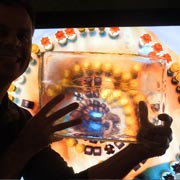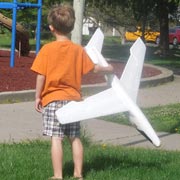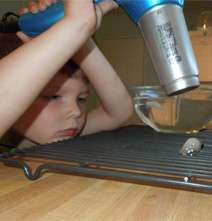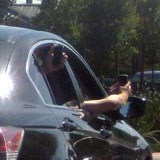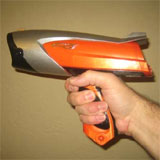Comparing LED light bulbs with Regular Bulbs and CFLs
Incandescent vs. CFL vs. LED bulbs
I like Compact Fluorescent bulbs. I think I like them because they are a symbol of efficiency. They perform the exact same job as another invention, using less fuel... a lot less. They are so much more efficent than incandescent bulbs that their higher price is easily justified.
In the last few years, LED bulbs have emerged onto the marketplace, delivering still greater efficency. I was intrigued. Do LED bulbs deliver an even better value than CFLs? It wasn't an easy calculation.

Leadership at VOID LED was familiar with Cockeyed.com and was confident I would be impressed by the bulbs' performance. They sent me some of their bulbs to test, confident they could survive the rigors of the Cockeyed labs.
Here are the categories for my tests:
- Appearance
- Power Use
- Price
- Heat Output
- Breakage Tests
Appearance

Halogens and other incandescent bulbs are fairly compact. Halogens are heavy due to the thick glass but other incandescents are lightweight. Compact Fluorescent Lights (CFLs) are larger and somewhat heavy at the base because they have an electronic transformer at the base. LED bulbs are also large, and also have an electronic transformer at the base.

It is difficult to portray the brightness and color of these bulbs in photos, because cameras like mine adjust their settings automatically to render color-balanced photographs no matter what the lighting conditions. Similarly, your eyes adjust in these lights, making it difficult to compare directly.
However I can make the following comparisons: The light from the
CFL looks diffuse and the light from the LED looks columnular. The LED is more of a spotlight.
The bulbs for this test were chosen specifically for comparison because they produce almost the same number of lumens: 980, 950 and 950. You should trust the numbers on the package over the appearance of an overall quantity of light in these photos. Also, I don't have an integrating sphere, so I can't test them accurately.

Experts use an integrating sphere to best determine a bulb's light quality and quantity, such as this 50 cm RadOMA sphere from Gamma Scientific. It is also good for rock tumbling.
Superb on a Disco Ball

Speaking of spheres, check out these two disco ball photographs. In the top photo, the diffuse light from a CFL bounces off the disco ball and lights up the ceiling. The seperate squares of the reflection blend into one large bright spot with a smooth appearance across the light and dark areas.

The LED bulb was completely different.
Forget hundreds of tiny points of light. The LED itself has 12 individual bulbs, and each was hitting scores of mirrors on the disco ball. It was a spectacle times twelve. It looked amazing.
Power Use
Setting up this comparison, I could have either chosen two bulbs with similar power use or similar light output. I chose similar light output because if I had chosen an incandescent bulb which only used 12 watts, it would be a nightlight:

Instead, I chose bulbs with similar light outputs, in the range of 950 lumens. As I mentioned before, the halogen and incandescent bulbs had a much higher energy use to produce this amount of light, 65 and 75 watts compared to 19 watts (CFL) and 12 watts (LED).

Assuming you use the bulb for 10 hours a day a 75 watt halogen uses 0.75 kilowatts per day, which costs 9¢. Not awful, but in 222 days, that's $20 in electricity to power this bulb.
The Compact Fluorescent Light uses 19 watts. Assume 10 hours a day, that's .19 kilowatts per day, which costs 2¢. Pretty good! In 222 days, that's $5.06 in electricity.
This LED Light uses 12 watts. Assume 10 hours a day, that's .12 kilowatts per day, which costs 1½¢. Incredible. In 222 days, that's $3.19 in electricity.
Bulb Replacement Calculations
Q. Should you replace an incandescent with a CFL bulb?
A.
Yes. Investing $5 in a replacement CFL will result in $5 of electricity savings in 71 days.
Q. Should you replace an incandescent with an LED bulb?
A.
Yes. Investing $40 in a replacement LED will result in $40 of electricity savings in 529 days.
Q. Should you replacing a CFL bulb with an LED bulb?
A. Maybe. Investing $40 in a replacement LED will result in $35 of electricity savings and $5 in bulb savings in 16 years... that's a long time, so the energy savings might not justify the up-front investment. However, if you are replacing a CFL because the bulb broke or burned out, the location may be unsuitable for CFL bulbs, either too prone to accidents, vibration or voltage-fluctuations via a dimmer switch. LEDs don't suffer from these ills.
CONTINUE READING PAGE 2 >
Cockeyed home page | Contact | Terms and Conditions | Updated October 1, 2012 Copyright 2012 Cockeyed.com






